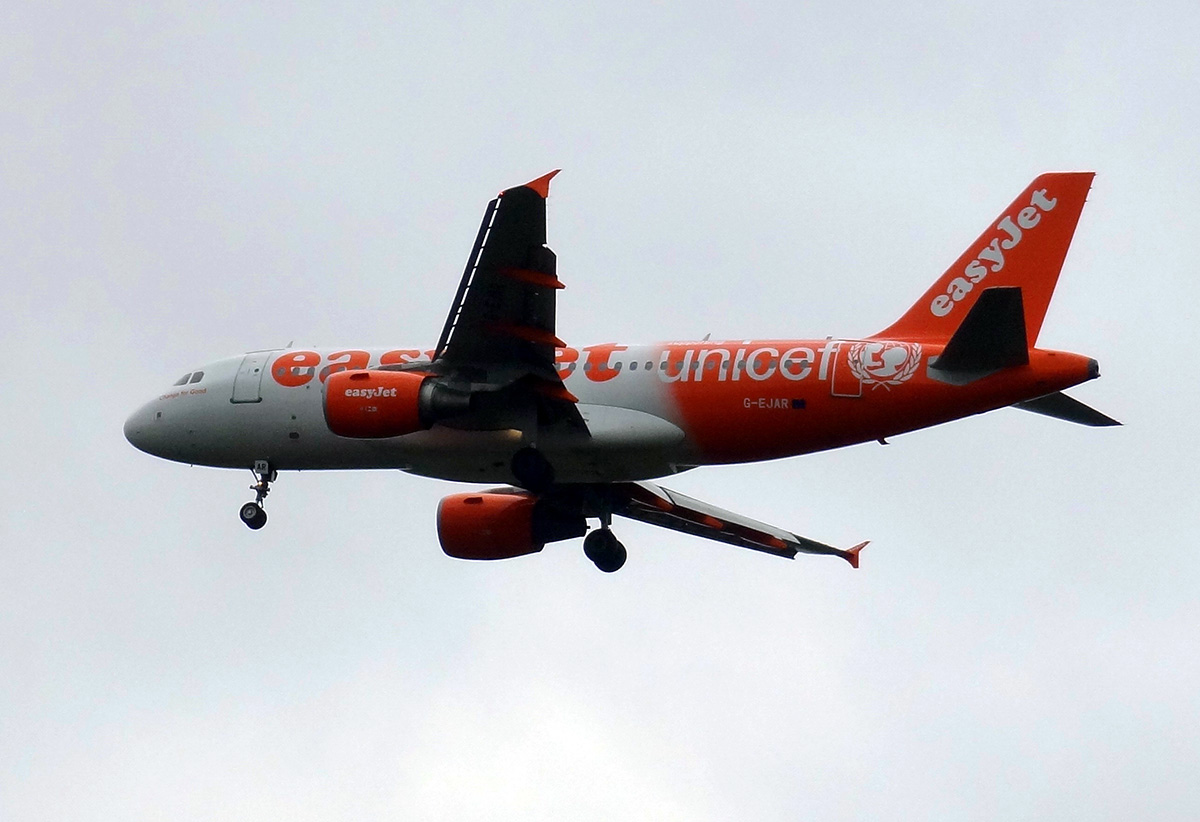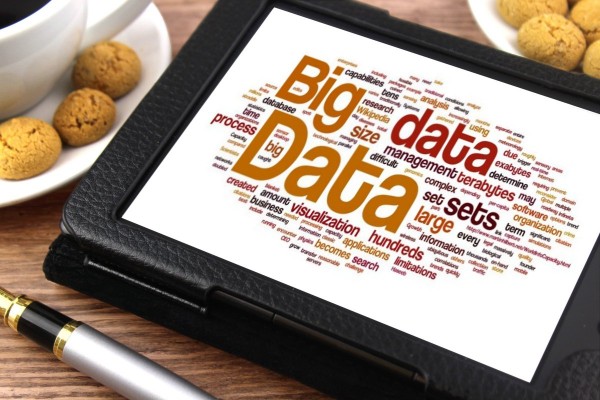 The USA has seen many horizontal mergers in recent years. This has turned industries that were once relatively competitive into oligopolies, resulting in lower output and higher prices for consumers.
The USA has seen many horizontal mergers in recent years. This has turned industries that were once relatively competitive into oligopolies, resulting in lower output and higher prices for consumers.
In Europe, by contrast, many markets are becoming more competitive. The result is that in industries such as mobile phone services, airlines and broadband provision, prices are considerably lower in most European countries than in the USA. As the French economist, Thomas Philippon, states in a Guardian article:
When I landed in Boston in 1999, the United States was the land of free markets. Many goods and services were cheaper than in Europe. Twenty years later, American free markets are becoming a myth.
According to Asher Schechter (see linked article below):
Nearly every American industry has experienced an increase in concentration in the last two decades, to the point where … sectors dominated by two or three firms are not the exception, but the rule.
The result has been an increase in deadweight loss, which, according to research by Bruno Pelligrino, now amounts to some 13.3 per cent of total potential surplus.
Philippon in his research estimates that monopolies and oligopolies “cost the median American household about $300 a month” and  deprive “American workers of about $1.25tn of labour income every year”.
deprive “American workers of about $1.25tn of labour income every year”.
One industry considered by the final two linked articles below is housebuilding. Since the US housing and financial crash of 2007–8 many US housebuilders have gone out of business. This has meant that the surviving companies have greater market power. According to Andrew van Dam in the linked Washington Post article below:
They have since built on that advantage, consolidating until many markets are controlled by just a few builders. Their power has exacerbated the country’s affordable-housing crisis, some economists say.
According to research by Luis Quintero and Jacob Cosman:
… this dwindling competition has cost the country approximately 150 000 additional homes a year – all else being equal. With fewer competitors, builders are under less pressure to beat out rival projects, and can time their efforts so that they produce fewer homes while charging higher prices.
Thanks to lobbying of regulators and politicians by businesses and various unfair, but just about legal, practices to exclude rivals, competition policy in the USA has been weak.
In the EU, by contrast, the competition authorities have been more active and tougher. For example, in the airline industry, EU regulators have “encouraged the entry of low-cost competitors by making sure they could get access to takeoff and landing slots.” Politicians from individual EU countries have generally favoured tough EU-wide competition policy to prevent companies from other member states getting an unfair advantage over their own country’s companies.
Articles
Questions
- What are the possible advantages and disadvantages of oligopoly compared with markets with many competitors?
- How can concentration in an industry be measured?
- Why have US markets become more concentrated?
- Why have markets in the EU generally become more competitive?
- Find out what has happened to levels of concentration in the UK housebuilding market.
- What are the possible effects of Brexit on concentration and competition policy in the UK?
 A number of famous Business Schools in the UK and US such as MIT Sloan, NYU Stern and Imperial College have launched new programmes in business analytics. These courses have been nicknamed ‘Big Data finishing school’. Why might qualifications in this area be highly valued by firms?
A number of famous Business Schools in the UK and US such as MIT Sloan, NYU Stern and Imperial College have launched new programmes in business analytics. These courses have been nicknamed ‘Big Data finishing school’. Why might qualifications in this area be highly valued by firms?
Employees who have the skills to collect and process Big Data might help firms to successfully implement a pricing strategy that approaches first-degree price discrimination.
First-degree price discrimination is where the seller of a product is able to charge each consumer the maximum price he or she is prepared to pay for each unit of the product. Successfully implementing this type of pricing strategy could enable a firm to make more revenue. It might also lead to an increase in economic efficiency. However, the strategy might be opposed on equity grounds.
In reality, perfect price discrimination is more of a theoretical benchmark than a viable pricing strategy. Discovering the maximum amount each of its customers is willing to pay is an impossible task for a firm.
It may be possible for some sellers to implement a person-specific pricing strategy that approaches first-degree price discrimination. Firms may not be able to charge each customer the maximum amount they are willing to pay but they may be able to charge different prices that reflect customers’ different valuations of the product.
 How could a firm go about predicting how much each of its customers is willing to pay? Traditionally smaller sellers might try to ‘size up’ a customer through individual observation and negotiation. The clothes people wear, the cars they drive and their ethnicity/nationality might indicate something about their income. Second-hand car dealers and stall-holders often haggle with customers in an attempt to personalise pricing. The starting point of these negotiations will often be influenced by the visual observations made by the seller.
How could a firm go about predicting how much each of its customers is willing to pay? Traditionally smaller sellers might try to ‘size up’ a customer through individual observation and negotiation. The clothes people wear, the cars they drive and their ethnicity/nationality might indicate something about their income. Second-hand car dealers and stall-holders often haggle with customers in an attempt to personalise pricing. The starting point of these negotiations will often be influenced by the visual observations made by the seller.
The problem with this approach is that observation and negotiation is a time-consuming process. The extra costs involved might be greater than the extra revenue generated. This might be especially true for firms that sell a large volume of products. Just imagine how long it would take to shop at a supermarket if each customer had to haggle with a member of staff over each item in their supermarket trolley!! There is also the problem of designing compensation contracts for sales staff that provide appropriate incentives.
However the rise of e-commerce may lead to a very different trading environment. Whenever people use their smart phones, laptops and tablets to purchase goods, they are providing huge amounts of information (perhaps unconsciously) to the seller. This is known as Big Data. If this information can be effectively collected and processed then it could be used by the seller to predict different customers’ willingness to pay.
Some of this Big Data provides information similar to that observed by sellers in traditional off-line transactions. However, instead of visual clues observed by a salesperson, the firm is able to collect and process far greater quantities of information from the devices that people use.
For example, the Internet Protocol (IP) address could be used to identify the geographical location of the customer: i.e. do they live in a relatively affluent or socially deprived area? The operating system and browser might also indicate something about a buyer’s income and willingness to pay. The travel website, Orbitz, found that Apple users were 40 per cent more likely to book four or five star hotel rooms than customers who used Windows.
Perhaps the most controversial element to Big Data is the large amount of individual-level information that exists about the behaviour of customers. In particular, browsing histories can be used to find out (a) what types of goods people have viewed (b) how long they typically spend on-line and (c) their previous purchase history. This behavioural information might accurately predict price sensitivity and was never available in off-line transactions.
Interestingly, there has been very little evidence to date that firms are implementing personalised pricing on the internet. One possible explanation is that effective techniques to process the mass of available information have not been fully developed. This would help to explain the growth in business analytics courses offered by universities. PricewaterhouseCoopers recently announced its aim to recruit one thousand more data scientists over the next two years.
Another possible explanation is that firms fear a backlash from customers who are deeply opposed to this type of pricing. In a widely cited survey of consumers, 91% of the respondents believed that first-degree price discrimination was unfair.
Articles
Big data is coming for your purchase history – to charge you more money The Guardian, Anna Bernasek and DT Mongan (29/5/15)
Big data is an economic justice issue, not just a Privacy Problem The Huffington Post, Nathan Newman (16/5/15)
MIT’s $75,000 Big Data finishing school (and its many rivals) Financial Times, Adam Jones (20/3/16)
The Government’s consumer data watchdog New York Times, Natasha Singer (23/5/2015)
The economics of big data and differential pricing The Whitehouse blog, Jason Furman, Tim Simcoe (6/2/2015)
Questions
- Explain the difference between first- and third-degree price discrimination.
- Using an appropriate diagram, explain why perfect price discrimination might result in an economically more efficient outcome than uniform pricing.
- Draw a diagram to illustrate how a policy of first-degree price discrimination could lead to greater revenue but lower profits for a firm.
- Why would it be so difficult for a firm to discover the maximum amount each of its customers was willing to pay?
- Explain how the large amount of information on the individual behaviour of customers (so-called Big Data) could be used to predict differences in their willingness to pay.
- What factors might prevent a firm from successfully implementing a policy of personalised pricing?
 Recent reports in the media have included headlines such as “Sexist surcharge” and “Pink premium?” Various claims have been made that women pay significantly higher prices for similar products than men.
Recent reports in the media have included headlines such as “Sexist surcharge” and “Pink premium?” Various claims have been made that women pay significantly higher prices for similar products than men.
The Times newspaper recently published the results from an investigation it carried out on the prices of hundreds of similar products that were marketed at both men and women. The study found that those products marketed at women cost 37% more on average than similar versions that were marketed at men. Examples included:
- Disposable razors: Tesco priced a packet of five of its own-brand disposable razors for women at £1. The key characteristic that targeted the razors at female customers was the colour – they were pink. For the same price, a packet targeted at male customers (i.e. they were blue) contained 10 disposable razors.
- Ballpoint pens: Staples priced a packet of five pastel-coloured Bic pens marketed ‘for her’ at £2.99. A packet of five Bic pens that were not in the ‘for her’ range (i.e. they had transparent barrels) were priced at £1.98.
- Scooters: Argos increased the price of a child’s scooter by £5 if it was pink instead of blue.
Maria Miller, the chair of the Women and Equalities Select Committee, stated that:
“It is unacceptable that women face higher costs for the same product just because they are targeted at women. Retailers have got to explain why they do this.”
A more detailed study carried out by New York City’s Department of Consumer Affairs was published in December 2015. Average prices were collected for 794 individual items across 5 different industries. The key findings were that products marketed at women were:
- 7 per cent more for toys and accessories
- 4 per cent more for children’s clothing
- 8 per cent more for adult clothing
- 13 per cent more for personal care products
- 8 per cent more for health products
Interestingly whereas the investigation in the UK only found examples of women paying higher prices than men, the New York study found some goods where the price was higher for men.
Reports in the media have claimed that this is clear evidence of price discrimination. Although this is likely to be true, it is impossible to say for certain without more detailed information on costs.
For example, when referring to the higher price for the razors marketed at women in the UK study, Richard Hyman, an analyst at RAH Advisory, stated that:
“the packaging will be different and they will sell fewer so it could be to do with the volume”
If economies of scale and the different costs of packaging can fully account for the difference in prices between the razors then it is not an example of price discrimination.
Articles
Questions
- Define price discrimination.
- Outline and explain the three different categories of price discrimination.
- Could a situation where a firms charges all of its customers the same price for a good or service ever be classed as an example of price discrimination?
- A firm with market power may still not be able to successfully implement a policy of price discrimination. Explain why.
- Under what circumstances could price discrimination improve allocative efficiency?
 An annual event takes place every October that leads to a large number of frustrated consumers – the sale of tickets for the Glastonbury festival. This year the sale of standard tickets began at 9.00am on Sunday 5th October. Within 27 minutes all of the 120,000 tickets had been sold and it was reported that over a million people had tried to access the website. Social media was full of messages from disappointed fans that had been unable to get a ticket.
An annual event takes place every October that leads to a large number of frustrated consumers – the sale of tickets for the Glastonbury festival. This year the sale of standard tickets began at 9.00am on Sunday 5th October. Within 27 minutes all of the 120,000 tickets had been sold and it was reported that over a million people had tried to access the website. Social media was full of messages from disappointed fans that had been unable to get a ticket.
The Glastonbury festival has grown in popularity and the organisers adopted a unique way of selling the tickets a number of years ago. They introduced a system that made it impossible for people to purchase tickets unless they had previously registered. Although there is no charge to register, in order to complete the process successfully, people have to submit a clear passport style photograph in Jpeg format. Once registered, customers are allocated a unique registration number which they must submit in order to purchase a ticket when they go on sale. Each buyer can purchase up to a maximum of 6 tickets and must provide a valid registration number for each separate ticket they obtain. Successful applicants receive a personalised ticket, including their photo, which cannot be re-sold. The organisers have been very clear about the rationale for introducing this scheme. They have stated that it is part of their
“on-going efforts to cut out ticket touting”
However a number of people have criticised the ticket sale process. These criticisms tend to fall into two key areas: first, the method used in the initial sale process and second, the constraints placed on resale after a ticket has been purchased.
The tickets are sold by the company SeeTickets and their Head of Business Development stated in an interview in 2013 that:
 There is something like 1,100,000 customers registered to go to Glastonbury, and they all want a ticket. It’s a shame but there is nothing you can do about it. The 900,000 people that don’t get to go often come up with the argument, why don’t you just have a ballot? Why don’t we just register and a computer generated ballot just picks the winners? I think they’ve (Glastonbury) always had a view that if you get a ticket to Glastonbury there’s an element of work that you have to do to achieve that and it does reward that commitment. I think there’s a sense that if you use a ballot then maybe you’d get some people who were not as committed.
There is something like 1,100,000 customers registered to go to Glastonbury, and they all want a ticket. It’s a shame but there is nothing you can do about it. The 900,000 people that don’t get to go often come up with the argument, why don’t you just have a ballot? Why don’t we just register and a computer generated ballot just picks the winners? I think they’ve (Glastonbury) always had a view that if you get a ticket to Glastonbury there’s an element of work that you have to do to achieve that and it does reward that commitment. I think there’s a sense that if you use a ballot then maybe you’d get some people who were not as committed.
However responding to these comments a customer commented that:
I’ve been lucky in the past and got tickets within minutes and like this year tried all morning and come away empty handed. Whether I have been successful has nothing to do with hard work but the vagaries of the internet and a bit of luck.
Another customer commented:
No ballot! It’s too random. People who really,really want to go should get the tickets, so the only fair way is regional ticket sales, where you could queue ( overnight if required) to get your ticket. This is the only fair way. Year after year genuine fans miss out. This way fans who are willing to make an effort get the chance, rather than a ballot or the random computer system which they have at present.
Others have criticised the limited ability consumers are given to resell their tickets. The full cost of a ticket for the 2015 festival is £220 plus a £5 booking fee. When the tickets are originally sold in October, the buyers have to pay a £50 deposit and at this point none of the bands playing at the festival have been announced. The remaining balance of £175 is due at the beginning of April by which point some of the bands/acts will have been confirmed. Anyone who decides not to pay the balance or cancel their order before this date is refunded their deposit, minus an administration fee. Those tickets are then put forward for re-sale. The re-sale process typically takes place at the end of April and once again is only open to people who have previously registered. Last year 10,000 tickets were re-sold in just 12 minutes! Once this period in April is over the re-sale of tickets is prohibited even though the complete line-up for the festival may not have been confirmed.
The secondary ticket company Viagogo reported the results from research they had carried out on the 2014 festival. This found that following the relatively late announcement of Metallica as one of the headline acts,78% of people who had bought a ticket said they would have resold it if they’d had the chance.
A spokesperson from Viagogo stated that:
We believe that once you’ve bought a ticket it’s yours and if you want to sell it or give it away, you should be allowed to do so. In this case, with an unpopular headline act announced late, ticket holders lose out because they can’t resell their tickets and Metallica fans lose out because they can’t buy them.
Those people who either did not get a ticket or are left with a ticket they would rather re-sell will no doubt continue to complain about the ticket selling process.
The economics of GlastonburyThe Economist (24/6/14)
Handbag Economics: How much Glastonbury will really cost you Handbag Economics (12/6/14)
Should Glastonbury Festival tickets go to the ballot? Virtual Festivals (8/10/13)
Glastonbury 2014: Four in five fans wanted to resell tickets after Metallica announcement The Independent (26/6/14)
Third of Glasto fans put-off by strict ‘no ticket resale policy’ – but 2015 is still a sell-out The Mirror (6/10/14)
“People wanted to sell Glastonbury tickets!” says ticketing website Bad PR (3/7/14)
The pain of Glastonbury tickets – in two charts The Mirror (6/10/14)
Questions
- What is the opportunity cost of going to the Glastonbury Festival? Discuss some of the non-ticket factors you have included in your calculations.
- Draw a demand and supply diagram to illustrate the market for Glastonbury tickets. NB think carefully about the shape of the supply curve in both the short-run and the long run. Is the current price of a ticket at the market clearing level? Explain your answer.
- The sale and re-sale of tickets takes place before the all the headline acts have been announced. Illustrate what will happen to the demand curve for consumers with different preferences once the headline acts have been announced.
- Assess the relative costs and benefits of using a ballot instead of the current system used by the festival organisers to sell of tickets.
- The organisers of the festival introduced the registration process in order to limit the re-sale of the tickets. Analyse the impact of this policy on Pareto and allocative efficiency? Will the policy cause any deadweight welfare loss? What factors will determine the size of any deadweight welfare loss?
- Suggest some reasons why care may need to be taken when using the results from the research carried out by Viagogo.
 There are a number of surveys that attempt to measure the spending intentions of people in the run up towards Christmas. For example a recent study carried out by YouGov found that people in the UK planned to spend an average of £599 on presents for their family and friends. This represented a 5.8% increase on the previous year. Planned total spending on Christmas was estimated to be a staggering £22 billion.
There are a number of surveys that attempt to measure the spending intentions of people in the run up towards Christmas. For example a recent study carried out by YouGov found that people in the UK planned to spend an average of £599 on presents for their family and friends. This represented a 5.8% increase on the previous year. Planned total spending on Christmas was estimated to be a staggering £22 billion.
 Respondents to another survey, carried out by the hotel chain Travelodge, stated that on average they planned to buy presents for 12 people. This study also found that the average expected spend on each present was £28.70 – an increase of £1.70 on the previous year. A rather obvious question for anyone interested in economics is whether this is either a sensible or an efficient way of allocating resources. One way to think about how an economist might approach this issue is to ask yourself the following questions after you have opened a present on Christmas day.
Respondents to another survey, carried out by the hotel chain Travelodge, stated that on average they planned to buy presents for 12 people. This study also found that the average expected spend on each present was £28.70 – an increase of £1.70 on the previous year. A rather obvious question for anyone interested in economics is whether this is either a sensible or an efficient way of allocating resources. One way to think about how an economist might approach this issue is to ask yourself the following questions after you have opened a present on Christmas day.
• How much money do you think the person who gave you the present paid for it?
• Ignoring the sentimental value, if you had not received this present how much would
you be willing to pay to purchase it?
Exactly 20 years ago the economist Joel Waldfogel posed questions very similar to these to a group of 86 students studying an intermediate microeconomics module at Yale University in the USA. On average the respondents to the questions estimated that friends and family had spent $438 on  the gifts they had received that Christmas. Unfortunately their willingness to pay for these same gifts was $313 on average. Economists would argue that this is an example of economic inefficiency because the recipients’ valuation of the gifts – as measured by their willingness to pay – was only 71.5% of the price paid by the person who gave them the presents. This means that it is possible to make the person who received the gift better off without making the person who purchased the gift any worse off. This argument can be illustrated with a simple example.
the gifts they had received that Christmas. Unfortunately their willingness to pay for these same gifts was $313 on average. Economists would argue that this is an example of economic inefficiency because the recipients’ valuation of the gifts – as measured by their willingness to pay – was only 71.5% of the price paid by the person who gave them the presents. This means that it is possible to make the person who received the gift better off without making the person who purchased the gift any worse off. This argument can be illustrated with a simple example.
Assume you have purchased a Liverpool football club shirt as a present for Sir Alex Ferguson and it cost you £50! Rather surprisingly Sir Alex likes the shirt but would have only been willing to pay £20 if he was buying it for himself. Imagine now that you have given him £50 cash instead of the shirt. This would not make you any worse off – your cash outlay would remain unchanged. However, Sir Alex would now be able to spend the £50 cash in a way which would give him far more satisfaction than the Liverpool football shirt would have given him. Sir Alex can therefore be made better off without making you worse off. The present in this example generates a deadweight welfare loss of £30. Waldfogel concluded from his later research based on a larger sample of people that, on average, people’s valuations of their presents is about 90% of the money actually spent on them. If this figure is accurate, it suggests that over £2 billion will be wasted in the UK this Christmas.
The size of the deadweight welfare loss depends on how well the person who is buying the present knows or understands the preferences of the recipient. The closeness of age, friendship or family relationship are all likely to influence the accuracy of this knowledge. Interestingly, Waldfogel found that presents from grandparents to grandchildren were the most inefficient: i.e. the difference between the recipient’s valuation of the gift and the price paid for the present was the greatest. The study also found that grandparents were more likely to give their grandchildren cash gifts.
 Do economists always advise people to give cash as presents? Thankfully the dismal science can find some positive things to say about giving gifts. The previous analysis can be criticised in a number of different ways. It assumes that the recipients are perfectly informed about all the potential gifts that are available. If the person buying the present can find an item that the recipient was unaware of, then it is possible that economic welfare might be increased. It has also been assumed that the pleasure or value people obtain from an item is not influenced by who has purchased it. It may be the case that people place a greater value on an item when it is a gift from somebody else. In the previous example, perhaps Sir Alex would value the Liverpool shirt at £60 if you had purchased it for him as a present. The analysis has also ignored the possibility that the person buying the present derives pleasure from trying to find a gift that they think the person would like. Perhaps people feel a ‘warm glow’ when they see the happiness of somebody opening their present on Christmas day.
Do economists always advise people to give cash as presents? Thankfully the dismal science can find some positive things to say about giving gifts. The previous analysis can be criticised in a number of different ways. It assumes that the recipients are perfectly informed about all the potential gifts that are available. If the person buying the present can find an item that the recipient was unaware of, then it is possible that economic welfare might be increased. It has also been assumed that the pleasure or value people obtain from an item is not influenced by who has purchased it. It may be the case that people place a greater value on an item when it is a gift from somebody else. In the previous example, perhaps Sir Alex would value the Liverpool shirt at £60 if you had purchased it for him as a present. The analysis has also ignored the possibility that the person buying the present derives pleasure from trying to find a gift that they think the person would like. Perhaps people feel a ‘warm glow’ when they see the happiness of somebody opening their present on Christmas day.
 A final interesting economic explanation for buying presents is that they might act as an effective signal in a situation where there is asymmetric information. It can be argued that this is the case in relationships where people have private information about their true feelings towards one another. One way of communicating these feelings is by simply telling someone how you feel about them. However, this might not be an effective signal, as someone who does not have such strong feelings could say the same things as someone who does! However, by taking the time and trouble to buy someone a present that they really like, you are able to signal more effectively how you really feel about them. The signal can be particularly strong if the person buying the present really dislikes shopping. Just giving someone cash, or not taking the time to buy a present the person really likes, might signal that you simply could not be bothered to exert the effort because your feelings are not that strong. The potential consequences of giving your partner money are amusingly demonstrated in the following clip: The Economics of Seinfeld: What’s the right Gift to give; cash?
A final interesting economic explanation for buying presents is that they might act as an effective signal in a situation where there is asymmetric information. It can be argued that this is the case in relationships where people have private information about their true feelings towards one another. One way of communicating these feelings is by simply telling someone how you feel about them. However, this might not be an effective signal, as someone who does not have such strong feelings could say the same things as someone who does! However, by taking the time and trouble to buy someone a present that they really like, you are able to signal more effectively how you really feel about them. The signal can be particularly strong if the person buying the present really dislikes shopping. Just giving someone cash, or not taking the time to buy a present the person really likes, might signal that you simply could not be bothered to exert the effort because your feelings are not that strong. The potential consequences of giving your partner money are amusingly demonstrated in the following clip: The Economics of Seinfeld: What’s the right Gift to give; cash?
Perhaps giving presents instead of cash is an economically efficient way of dealing with situations where asymmetric information is potentially an important issue.
Articles
British households plan to spend £820 on Christmas YouGov (11/11/13)
Brits ‘to spend more on Christmas presents this year with average gift costing £28.70’ Daily Mirror (13/11/13)
Christmas shoppers hit the sales in biggest spending spree since the recession began Daily Express (15/12/13)
Bah, Humbug The Joy of Economics: Making Sense out of Life, Robert J. Stonebraker (22/05/13)
What many economists don’t understand about Christmas Quartz, Tim Fernholz (19/12/13)
The Economics of Gifts Greg Mankiw’s Blog (24/12/06)
The case against Christmas presents The Guardian (19/12/13)
Grinchonomics or how the Economist stole Christmas Economics in Plain English (16/12/10)
The true value of the 12 days of Christmas reveals giving cash may be the most cost-effective gift Perth Now, Jessica Irvine (21/12/13)
Questions
- Explain what is meant by the term ‘allocative efficiency’. Use a diagram to help illustrate and explain your answer.
- Draw an indifference curve diagram to illustrate the potential welfare costs of giving presents instead of cash.
- Assess whether giving someone a gift card is more economically efficient than giving them a present.
- Using a simple numerical example, explain how economic welfare could be higher if someone buys a present that the recipient was unaware of. What factors might you have to take into account when carrying out this economic analysis?
- Explain what is meant by the term ‘asymmetric information’. Provide a number of examples to help illustrate your answer.
- What properties must a signal have if it is to successfully overcome problems caused by asymmetric information?
 The USA has seen many horizontal mergers in recent years. This has turned industries that were once relatively competitive into oligopolies, resulting in lower output and higher prices for consumers.
The USA has seen many horizontal mergers in recent years. This has turned industries that were once relatively competitive into oligopolies, resulting in lower output and higher prices for consumers.  deprive “American workers of about $1.25tn of labour income every year”.
deprive “American workers of about $1.25tn of labour income every year”.








